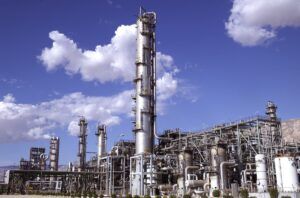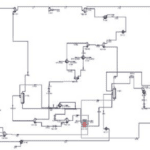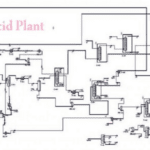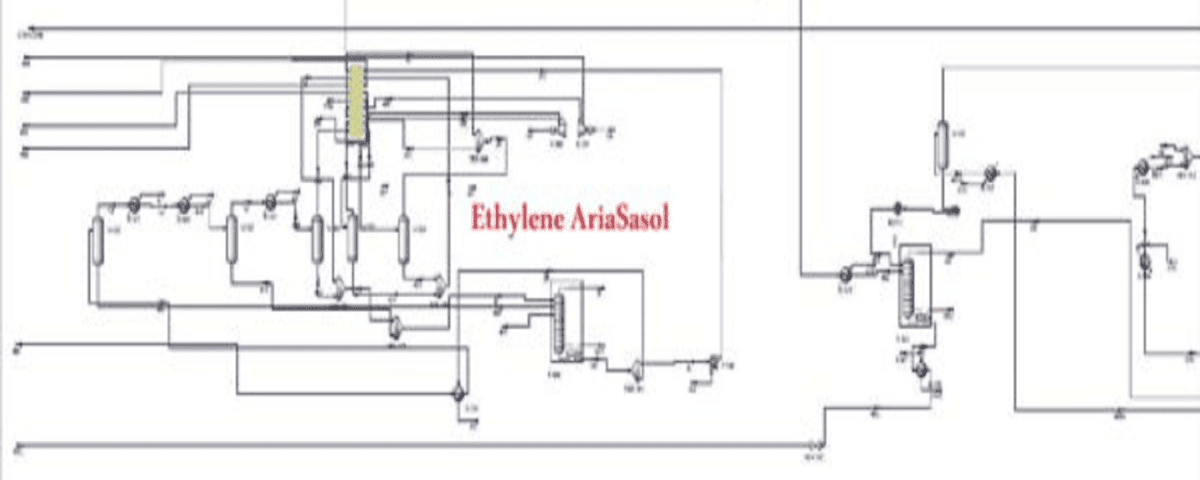Introduction
Petrochemical units are fundamental components of the petrochemical industry, playing a crucial role in supplying raw materials for various products. Among these processes, ethylene recovery stands out as one of the most essential due to ethylene’s widespread use as a primary feedstock in the production of plastics, fibers, and numerous other chemical compounds.
Simulating and analyzing chemical processes with specialized software provides an effective tool for identifying system inefficiencies and optimizing performance. In this context, Aspen HYSYS, a trusted software in the field, enables us to analyze ethylene recovery processes in Arya Sasol Petrochemical.
Through this approach, optimizing energy usage in ethylene recovery processes can significantly reduce environmental impact and improve the economic sustainability of petrochemical units.
Process Overview
As illustrated in the accompanying diagram, ethane feedstock, supplied by Pars Petrochemical, enters this unit alongside recycled ethane from within the system. Both streams are directed into cracking furnaces. The furnace output is quickly cooled and routed to the compression section. The gas exiting the compressor is dehydrated in desiccant absorbers, then directed to the cooling section. Following cooling, the cracked gas enters distillation columns, where various carbon fractions are separated. The overhead of the deethanizer (C2 Cut) is sent to a hydrogenation reactor, where acetylene is converted into ethylene. Finally, the ethylene moves to a separator column, where pure ethylene is separated from ethane, and is then directed either to downstream polyethylene production units or to storage tanks for export.
The ethylene unit is divided into five main sections:
- Cracking Furnaces
- Cooling of Cracked Gas and Diluent Recovery in the Cooling Tower
- Compression and Caustic Washing
- Cooling and Recovery of C2 Cut
- Hydrogenation and Ethylene Purification

Project Description
In this project, the ethylene recovery unit of Arya Sasol Petrochemical has been simulated using industrial PFDs and Aspen HYSYS version 10 software. Following the simulation, exergy analysis of the process was conducted using Excel, with exergy efficiency charts created for various equipment.
Available Files
- Exergy Analysis Excel File
- Simulation File
- Industrial PFD


